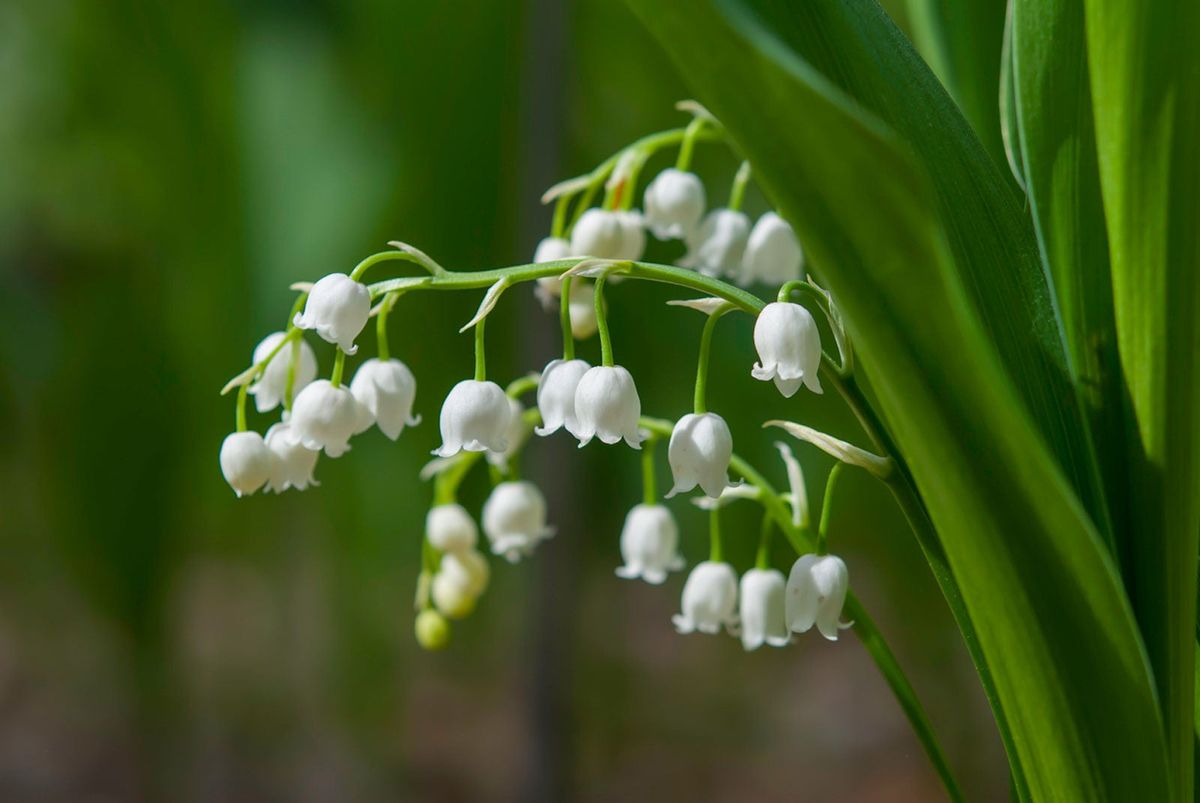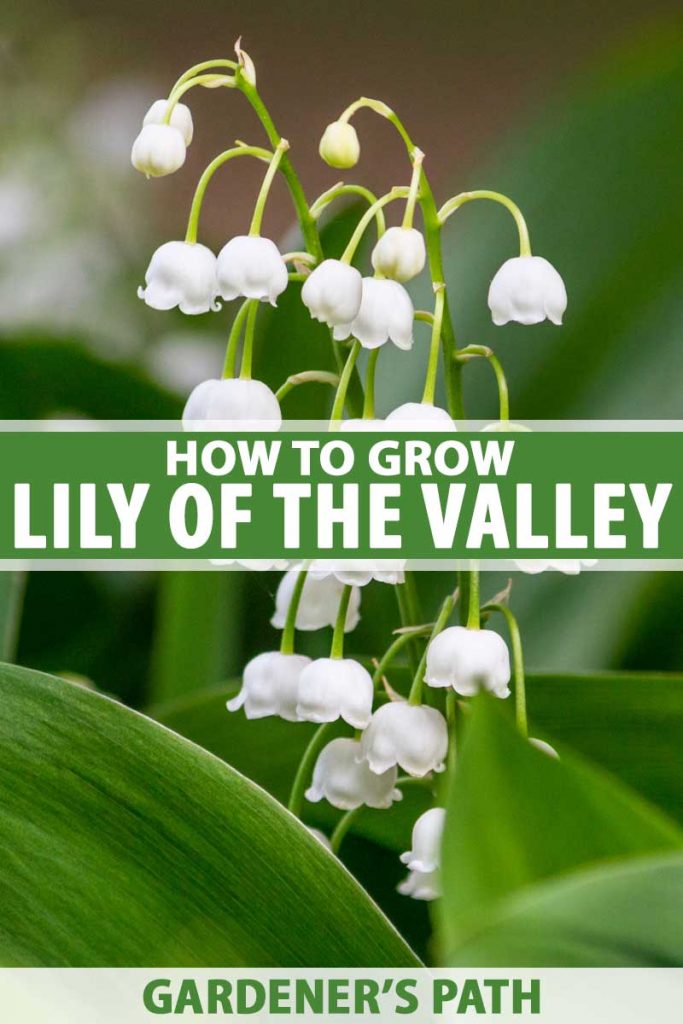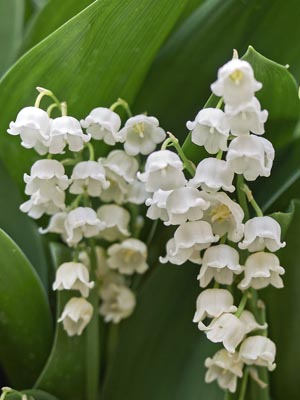The Advantages of Container Gardening for Lily of the Valley
Container gardening offers several benefits for growing lily of the valley, making it an ideal choice for gardeners who want to cultivate this beautiful and fragrant plant. One of the primary advantages of growing lily of the valley in pots is better soil control. By using a container, gardeners can select a high-quality potting mix that is specifically designed to meet the needs of lily of the valley, ensuring optimal growth and flowering. Additionally, container gardening allows for improved drainage, which is essential for lily of the valley, as it is susceptible to root rot if the soil is too moist.
Another significant benefit of container gardening for lily of the valley is increased mobility. Pots can be easily moved to different locations, allowing gardeners to optimize the plant’s exposure to sunlight and temperature. This is particularly useful for lily of the valley, which prefers partial shade and consistent temperatures between 65°F to 75°F (18°C to 24°C). Furthermore, container gardening helps to prevent the spread of invasive roots, which can be a problem when growing lily of the valley in the ground. By containing the roots, gardeners can prevent the plant from taking over other areas of the garden.
For gardeners who are wondering, “Can you grow lily of the valley in pots?”, the answer is a resounding yes. With the right container, soil, and care, lily of the valley can thrive in pots, providing beautiful flowers and fragrance for months to come. By taking advantage of the benefits of container gardening, gardeners can enjoy the beauty of lily of the valley while minimizing the risks associated with invasive roots and poor soil quality.
Choosing the Right Container and Soil for Your Lily of the Valley
When it comes to growing lily of the valley in pots, selecting the right container and soil is crucial for optimal growth and flowering. The container should be at least 6-8 inches deep and have drainage holes to prevent waterlogged soil. A container that is too small can lead to root bound conditions, which can negatively impact the plant’s growth and flowering.
In terms of material, a container made of ceramic, terracotta, or wood is ideal for lily of the valley. These materials allow for good air circulation and moisture retention, which are essential for healthy root growth. Avoid using plastic or metal containers, as they can retain too much heat and moisture, leading to root rot and other problems.
When it comes to soil, a well-draining potting mix is essential for lily of the valley. A mix that is specifically designed for acid-loving plants, such as azaleas or rhododendrons, is ideal. This type of mix will have a slightly acidic pH, which is perfect for lily of the valley. Avoid using regular potting soil, as it can be too alkaline and may not provide the right nutrients for the plant.
In addition to a well-draining potting mix, it’s also important to consider adding soil amendments to improve the soil’s fertility and structure. A balanced fertilizer that is high in organic matter, such as compost or well-rotted manure, is ideal. This will provide the plant with the necessary nutrients for healthy growth and flowering. For gardeners who are wondering, “Can you grow lily of the valley in pots?”, the answer is yes, as long as you provide the right container and soil conditions.
Some recommended soil amendments for lily of the valley include:
- Compost: adds organic matter and improves soil structure
- Well-rotted manure: provides nutrients and improves soil fertility
- Peat moss: helps to retain moisture and improve soil acidity
- Perlite or vermiculite: improves drainage and prevents waterlogging
By choosing the right container and soil, and adding the right soil amendments, gardeners can create an ideal environment for growing lily of the valley in pots. This will help to promote healthy growth, flowering, and fragrance, making it a beautiful and rewarding addition to any garden or indoor space.
How to Plant and Care for Lily of the Valley in Pots
Planting and caring for lily of the valley in pots requires attention to detail and a understanding of the plant’s specific needs. By following these step-by-step instructions, gardeners can ensure their lily of the valley plants thrive in containers.
Planting:
- Choose a healthy lily of the valley plant with bright green leaves and no signs of pests or diseases.
- Gently remove the plant from its pot and inspect the roots. If the roots are circling or growing out of the pot, gently tease them apart with your fingers.
- Place the plant in the container, making sure the crown (where the leaves meet the roots) is level with the soil surface.
- Fill in the container with a well-draining potting mix, gently firming the soil around the roots as you go.
- Water the plant thoroughly after planting and keep the soil consistently moist during the first few weeks after planting.
Watering:
- Water lily of the valley plants in pots when the top inch of soil feels dry to the touch.
- Avoid getting water on the leaves or crown of the plant to prevent rot and other diseases.
- Reduce watering during the winter months when the plant is dormant.
Fertilization:
- Dilute the fertilizer to half the recommended strength to avoid burning the roots.
- Apply the fertilizer once a month, taking care not to get any on the leaves or crown of the plant.
Pruning:
- Prune lily of the valley plants in pots after they finish flowering to encourage new growth and prevent the plant from becoming leggy.
- Remove any dead or damaged leaves or stems, cutting them off at the base of the plant.
- Divide and replant the lily of the valley every 3-4 years to maintain its health and vigor.
By following these care instructions, gardeners can enjoy the beauty and fragrance of lily of the valley in pots. Remember, with the right care and attention, lily of the valley can thrive in containers, providing a stunning display of flowers and foliage. For gardeners who are wondering, “Can you grow lily of the valley in pots?”, the answer is a resounding yes, as long as you provide the right care and attention.
Providing Optimal Conditions for Lily of the Valley in Containers
Lily of the valley is a versatile plant that can thrive in a variety of conditions, but it does have some specific requirements when it comes to lighting, temperature, and humidity. By providing the right conditions, gardeners can encourage optimal growth and flowering in their lily of the valley plants.
Lighting:
- Lily of the valley prefers partial shade to full shade, especially in warmer climates.
- Avoid placing the plant in direct sunlight, which can cause the leaves to become scorched and the flowers to fade.
- East- or west-facing windows are ideal for lily of the valley, as they provide gentle, indirect light.
Temperature:
- Lily of the valley prefers temperatures between 65°F to 75°F (18°C to 24°C) during the day.
- Avoid placing the plant in areas with drafts or extreme temperatures, which can cause stress and reduce flowering.
- Keep the plant away from heating vents, radiators, and air conditioning units, which can dry out the air and cause the plant to become stressed.
Humidity:
- Lily of the valley prefers a relatively high humidity, typically above 50%.
- To maintain the right humidity, place the plant on a tray filled with water and pebbles or use a humidifier nearby.
- Avoid placing the plant in areas with low humidity, such as near heating vents or in dry climates, which can cause the leaves to become crispy and the flowers to drop.
By providing the right lighting, temperature, and humidity conditions, gardeners can encourage their lily of the valley plants to thrive in containers. Remember, lily of the valley is a adaptable plant that can grow well in a variety of conditions, but it does have some specific requirements to produce optimal growth and flowering. For gardeners who are wondering, “Can you grow lily of the valley in pots?”, the answer is yes, as long as you provide the right conditions and care.
In addition to providing the right conditions, gardeners can also use a few tricks to encourage optimal growth and flowering in their lily of the valley plants. For example, placing the plant in a cooler location during the winter months can help to induce flowering, while providing a balanced fertilizer during the growing season can promote healthy growth and flowering.
Pest and Disease Management for Lily of the Valley in Containers
Lily of the valley is generally a hardy and disease-resistant plant, but it can still be susceptible to certain pests and diseases, especially when grown in containers. By being aware of these potential issues and taking steps to prevent and treat them, gardeners can keep their lily of the valley plants healthy and thriving.
Common Pests:
- Aphids: These small, soft-bodied insects can be found on the leaves and stems of lily of the valley, and can cause curled or distorted leaves.
- Slugs: These pests can chew holes in the leaves and flowers of lily of the valley, and can be especially problematic in containers.
- Spider mites: These tiny, spider-like insects can cause yellowing or bronzing of the leaves, and can be difficult to detect.
Common Diseases:
- Root rot: This fungal disease can cause the roots of lily of the valley to rot, leading to yellowing or wilting of the leaves.
- Leaf spot: This fungal disease can cause small, circular spots to form on the leaves of lily of the valley, and can be spread by water or insects.
- Powdery mildew: This fungal disease can cause a white, powdery coating to form on the leaves of lily of the valley, and can be spread by wind or water.
Prevention and Treatment:
- Inspect plants regularly for signs of pests or diseases, and take action promptly if any issues are detected.
- Use physical barriers, such as fine mesh or fine netting, to prevent pests like slugs and aphids from reaching the plants.
- Use organic or chemical controls, such as insecticidal soap or neem oil, to treat infestations of pests like aphids and spider mites.
- Improve air circulation and reduce humidity to prevent fungal diseases like root rot and leaf spot.
- Use fungicides, such as copper-based products, to treat fungal diseases like powdery mildew.
By being aware of these potential pests and diseases, and taking steps to prevent and treat them, gardeners can keep their lily of the valley plants healthy and thriving in containers. Remember, with the right care and attention, lily of the valley can be a beautiful and rewarding addition to any garden or indoor space. For gardeners who are wondering, “Can you grow lily of the valley in pots?”, the answer is yes, as long as you provide the right conditions and care.
Propagation and Division of Lily of the Valley in Pots
Lily of the valley is a versatile plant that can be easily propagated through division and seed. By propagating lily of the valley, gardeners can share plants with friends and family, or create new plants to add to their own collection.
Division:
- The best time to divide lily of the valley is in the spring or fall, when the plant is dormant.
- Choose a healthy plant with multiple stems and a robust root system.
- Carefully dig up the plant, taking care not to damage the roots.
- Separate the stems and roots, making sure each division has at least one growing stem and a small amount of roots.
- Replant the divisions in a well-draining potting mix, water thoroughly, and provide bright, indirect light.
Seed:
- Lily of the valley seeds can be started indoors 6-8 weeks before the last frost date.
- Sow the seeds on the surface of a well-draining seed starting mix, and cover with a thin layer of soil.
- Provide bright, indirect light and keep the soil consistently moist.
- Transplant the seedlings into individual pots once they have 2-3 sets of leaves.
Tips for Successful Propagation:
- Make sure the soil is consistently moist during the propagation process.
- Provide bright, indirect light to promote healthy growth.
- Keep the temperature between 65-75°F (18-24°C) to promote root growth.
- Avoid over-handling the roots, as this can cause stress and reduce the chances of successful propagation.
By following these steps and tips, gardeners can successfully propagate lily of the valley through division and seed. Remember, propagation is a great way to share plants with friends and family, or to create new plants to add to your own collection. For gardeners who are wondering, “Can you grow lily of the valley in pots?”, the answer is yes, and with propagation, you can create even more beautiful and fragrant plants to enjoy.
Troubleshooting Common Problems with Lily of the Valley in Containers
While lily of the valley is a relatively low-maintenance plant, it can still be susceptible to certain problems when grown in containers. By being aware of these potential issues and taking steps to address them, gardeners can keep their lily of the valley plants healthy and thriving.
Yellowing Leaves:
- Yellowing leaves can be a sign of overwatering, underwatering, or nutrient deficiency.
- Check the soil moisture and adjust the watering schedule as needed.
- Consider adding a balanced fertilizer to the soil to provide essential nutrients.
Lack of Flowering:
- Lack of flowering can be due to insufficient light, inadequate fertilization, or root bound conditions.
- Move the plant to a brighter location or consider using grow lights to supplement the natural light.
- Feed the plant with a balanced fertilizer during the growing season to promote healthy growth and flowering.
- Consider repotting the plant in a larger container to give the roots more room to grow.
Root Bound Conditions:
- Root bound conditions can occur when the plant has outgrown its container and needs to be repotted.
- Check the roots by gently removing the plant from its container and inspecting the roots.
- Repot the plant in a larger container with fresh, well-draining potting mix.
Other Common Problems:
- Pests: Check for pests like aphids, slugs, and snails, and treat the plant with insecticidal soap or neem oil as needed.
- Diseases: Inspect the plant for signs of disease like powdery mildew, leaf spot, or root rot, and treat the plant with fungicides as needed.
By being aware of these potential problems and taking steps to address them, gardeners can keep their lily of the valley plants healthy and thriving in containers. Remember, with the right care and attention, lily of the valley can be a beautiful and rewarding addition to any garden or indoor space. For gardeners who are wondering, “Can you grow lily of the valley in pots?”, the answer is yes, and with proper care and attention, you can enjoy the beauty and fragrance of this lovely plant.
Enjoying the Fruits of Your Labor: Harvesting and Displaying Lily of the Valley
After months of careful cultivation, the moment of truth has finally arrived: it’s time to enjoy the beautiful flowers and fragrance of your lily of the valley plants. Whether you’re looking to create stunning arrangements or simply want to display your plants in decorative containers, there are many ways to enjoy the fruits of your labor.
Harvesting Flowers:
- Wait until the flowers are in full bloom and the petals are fully open.
- Cut the stems at an angle, just above a leaf node, to encourage new growth.
- Remove any excess foliage to prevent the stems from becoming waterlogged.
- Place the cut flowers in a vase or arrangement, and enjoy their beauty and fragrance.
Displaying Plants:
- Choose decorative containers that complement the beauty of the lily of the valley plants.
- Consider adding other plants or flowers to create a stunning arrangement.
- Place the plants in a location with bright, indirect light to showcase their beauty.
- Enjoy the fragrance and beauty of the lily of the valley plants, and be proud of your hard work and dedication.
Ideas for Arrangements:
- Create a stunning centerpiece for your dining table using lily of the valley flowers and other complementary flowers.
- Make a beautiful bouquet using lily of the valley flowers and other fragrant flowers like roses or freesia.
- Use lily of the valley flowers to create a stunning wreath or garland for your home or garden.
By following these tips and ideas, you can enjoy the beauty and fragrance of your lily of the valley plants and showcase your hard work and dedication. Remember, with the right care and attention, lily of the valley can be a beautiful and rewarding addition to any garden or indoor space. For gardeners who are wondering, “Can you grow lily of the valley in pots?”, the answer is yes, and with these tips and ideas, you can enjoy the fruits of your labor and create stunning arrangements and displays.


/lily-of-the-valley-big-56a5865f5f9b58b7d0dd443a.jpg)


:max_bytes(150000):strip_icc()/lily_of_the_valley-135579624_0-2000-479254e90a5c43f198c6c188f53f2194.jpg)



